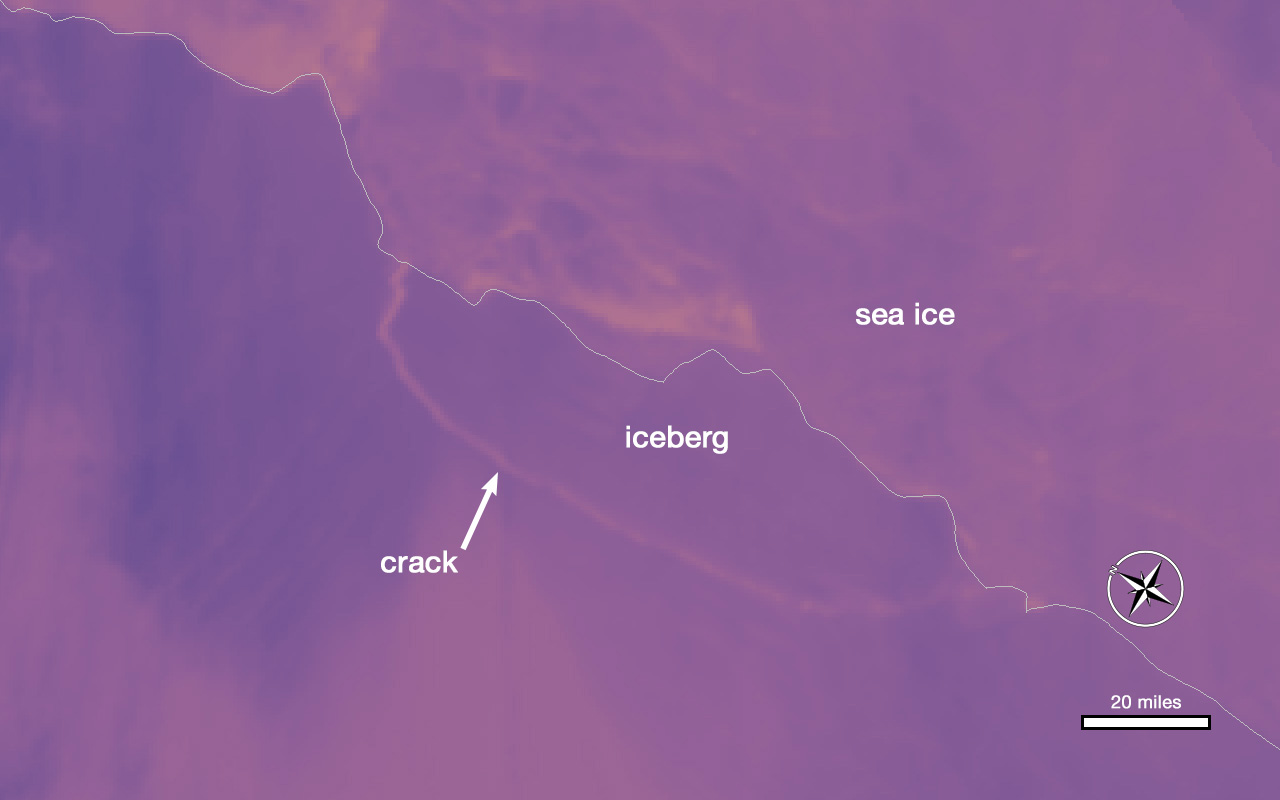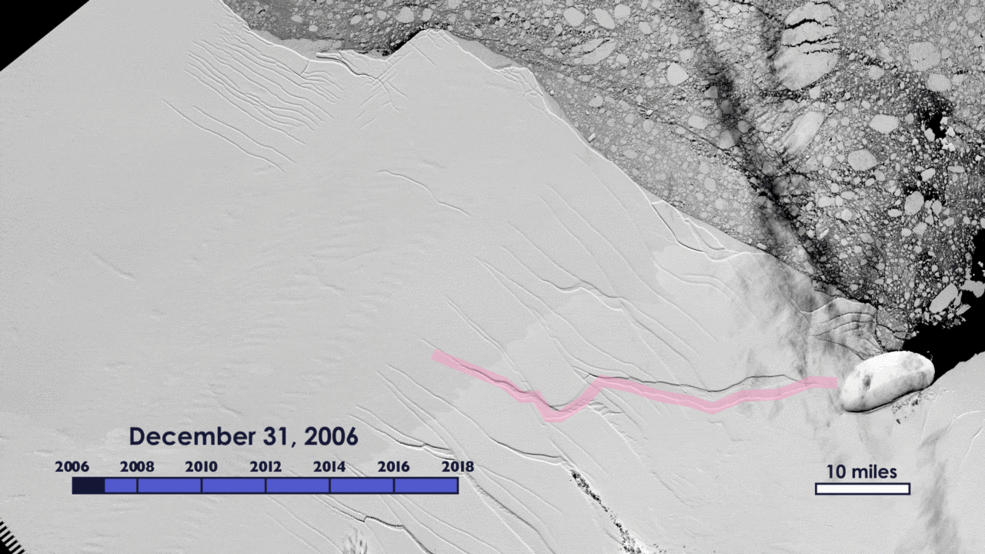NASA Images Show Gradual Separation of Massive New Antarctic Iceberg

Multiple NASA satellites have captured images of the dramatic and long-awaited birth of one of the largest icebergs ever recorded, which broke off an Antarctic ice shelf this week.
The enormous iceberg contains more than 1.1 trillion tons (1 trillion metric tons) of water and is about the size of Delaware. Its separation from Antarctica's Larsen C ice shelf occurred sometime between July 10 and today (July 12), and was first reported by scientists with the U.K.-based Project Midas, an Antarctic research group. The calving was confirmed by satellite images from the European Space Agency's Copernicus Sentinel-1 mission. [How Satellites Watched the New Iceberg's Birth Over Time]
Now, images from NASA satellites show the iceberg's gradual separation from the ice shelf. The crack in the ice shelf that formed the iceberg was first observed in the early 1960s, but remained dormant for decades, according to a statement from NASA. The animation above includes images going back to 2006, collected by NASA and the United States Geologic Survey's Landsat satellites.
The rift in the ice shelf began to spread northward at a significant rate in 2014, and its progress accelerated in 2016, leading scientists to assume it would eventually create a separate iceberg. Between June 24 and 27, the speed of rift tripled, according to scientists with the Midas Project.
In November 2016, the rift was estimated to be about 300 feet (91 m) wide and 70 miles (112 km) long. Measurements from this summer put the rift at 124 miles (200 km) long.
The MODIS instrument on NASA's Aqua satellite use thermal data to show temperature differences in the ice and seawater. In a false-color image taken today (July 12), the crack that created the iceberg is visible as a thin, pink line down the mostly purple ice sheet. The warmer temperature of the crack indicates that ocean water lies not far below the surface.
The Thermal Infrared Sensor (TIRS) on the Landsat 8 satellite also captured temperature data on June 17. The false-color image shows the slightly warmer crack (light blue) running through the very cold ice shelf (mostly white). The image shows warmer areas in orange, including regions of very thin sea ice. [Landsat: Four Decades of Images and Data]
Breaking space news, the latest updates on rocket launches, skywatching events and more!
The Larsen C ice shelf is a floating ice shelf, which means the separation of the iceberg will not cause ocean levels to rise, unlike icebergs that calf from land-based ice shelves. Scientists with the Midas Project said they have not found evidence that the iceberg's formation was directly caused by climate change. However, the scientists said in a statement that this is the farthest back that the ice front has been in recorded history, and they are "going to be watching very carefully for signs that the rest of the shelf is becoming unstable."
Follow Calla Cofield @callacofield. Follow us @Spacedotcom, Facebook and Google+. Original article on Space.com.

Calla Cofield joined Space.com's crew in October 2014. She enjoys writing about black holes, exploding stars, ripples in space-time, science in comic books, and all the mysteries of the cosmos. Prior to joining Space.com Calla worked as a freelance writer, with her work appearing in APS News, Symmetry magazine, Scientific American, Nature News, Physics World, and others. From 2010 to 2014 she was a producer for The Physics Central Podcast. Previously, Calla worked at the American Museum of Natural History in New York City (hands down the best office building ever) and SLAC National Accelerator Laboratory in California. Calla studied physics at the University of Massachusetts, Amherst and is originally from Sandy, Utah. In 2018, Calla left Space.com to join NASA's Jet Propulsion Laboratory media team where she oversees astronomy, physics, exoplanets and the Cold Atom Lab mission. She has been underground at three of the largest particle accelerators in the world and would really like to know what the heck dark matter is. Contact Calla via: E-Mail – Twitter



